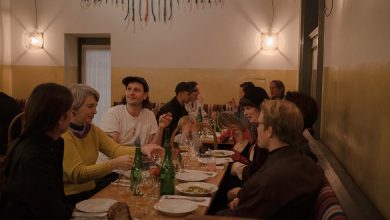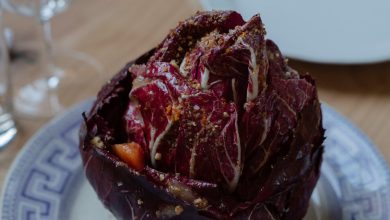A New Line of Face Oils, Made With Well-Loved Plants

For the last 20 years — between exhibiting genre-defying installations like a “meditation nightclub” in Las Vegas and lecturing on the relationships between light, neurology and technology at venues such asTate Britain and the Venice Biennale — the multimedia artist Lia Chavez, 43, has studied plant oils, essences and extracts, and used them to concoct her own beauty products. “I started making them out of necessity because I have very sensitive skin and really fine, 100 percent botanical products didn’t exist,” she told me recently over the phone from her home and studio in Brookhaven, N.Y. “My work as an artist has always been focused on illumination, so it seemed inevitable that I would eventually work with plants — they’re the great alchemists of light.”
Over the past decade, more and more people have joined Chavez in her interest, asthe movement toward greener ways of living has extended from a heightened consciousness about what we put in our bodies to a growing awareness of what we put on them in the form of products. There is a wave of recently established skin-care brands that use meticulously sourced, often hyper-locally grown organic ingredients: Be Here Farm + Nature and Earth Tu Face in Northern California, Flamingo Estate and Figaro Apothecary in Los Angeles and Cultivate Apothecary in New York State. But what makes the products from Hildegaard — the line of nutrient-rich, anti-inflammatory botanical facial oils that Chavez launched this month — unique, even among this group, is that while many founders use ingredients from small nearby farms or simply draw inspiration from a select few herbs in their backyards, 80 percent of the 70 different oil extracts that feature in Chavez’s formulas are made from plants she tends herself, with the help of a handful of apprentice farmers whom she is mentoring in regenerative agriculture and herbalism. It’s an intimate, direct way of working that ensures quality, sustainability and full knowledge of what’s in the bottle.
Chavez’s approach is informed, too, by traditional folk remedies. In 2005, she became fascinated by plant medicine while studying Raja yoga, Ayurveda and meditation in Kerala and Goa, India, for three months. She began eating a plant-based diet and, she said, “I changed my skin-care practice overnight.” She continued her education in the States, taking an intensive six-week course on the science of plant-based wellness led by the renowned nutrition expert Dr. T. Colin Campbell of Cornell University, as well as a course with the Vermont-based Rosemary Gladstar, often referred to as the godmother of American herbalism. Initially, this study was driven simply by Chavez’s desire to expand her own understanding of plants and herbs. But in 2019, she gave some samples of an early version of a facial oil she’d made — with ingredients including hibiscus flower, which contains exfoliating alpha hydroxy acids, and snowberry, a plant long valued for its cleansing and healing effects — to a friend who is a vice president at the esteemed skin-care brand La Mer. “She was gob-smacked when she tried it,” said Chavez, “and kept telling me I should take this to market because she felt the work was next level.”
Chavez decided to do just that and, when it came to production, she didn’t have to look far beyond her own doorstep. Her four-acre property, which she has owned since 2015, is situated in an agrarian hamlet and backs onto farmland and forest. Beginning in 2018, and in keeping with the recommendations of United Plant Savers — a nonprofit organization founded by Gladstar that is devoted to preserving America’s native medicinal plants and their habitats, and to whom Chavez donates a portion of each Hildegaard sale— she has been repopulating two acres of the woodland behind her atelier with endangered wild medicinal plants. Among them are echinacea (said to fortify the epidermis by increasing levels of lipids and ceramides), American ginseng (which has antioxidant properties) and lemon balm (known for its anti-inflammatory and antibacterial qualities). She loves to visit the garden in the morning “when my mind is fresh and I can meditate with the plants,” she said, but she often returns throughout the day to cut herbs for cooking.
Chavez also tends to a larger plot just down the road at the actress and philanthropist Isabella Rossellini’s Mama Farm. The two women first met when Rossellini commissioned Chavez to create a live dance performance, “Light Body,” which she presented at the farm in 2016. They became fast friends, and Chavez’s family — she and her partner, David Shing, have a 4-year-old daughter, Ocean —joined Mama Farm’s C.S.A. in 2017. In 2019, she began apprenticing at the property under farmer Patty Gentry, to learn the art of permaculture and organic, regenerative agriculture. And since then, Chavez has incorporated the plants she grows at Mama Farm into her remedies, as well. Today, over 100 plants — including elderflower, six varieties of sage leaf and eight varieties of thyme — flourish there under her care.
The only ingredients used in Hildegaard’s products that Chavez doesn’t cultivate herself are four raw essences of species that, she said, “are the connoisseur’s version of the plants” and whose distillations require extremely specialized knowledge and climates. To source these, she works with the plant extract producer LMR Naturals by IFF, which is as dedicated as she is to ensuring the highest permaculture standards and sustainable practices; through the company, she gets damask rose from the high-altitude region of Isparta in Turkey, immortelle from Serbia, frankincense from a family-run grove in Somalia and orange blossom from Tunisia.
Each of the four facial oils in Hildegaard’s initial offering highlights one of these essences, enabling customers to experience their distinctive scents and provenances. (For those who wish to try all four varieties or experiment with layering them, there is also a “collector’s palette” that includes a quartet of samples.) Unlike many skin-care products, which typically include just a handful of extracts, each of Hildegaard’s formulas features not only its namesakeessence but also a signature base containing extracts from 70 organic, virgin cold-pressed plants, all of which are solar-extracted on Chavez’s property over a period of five weeks. The results are packaged in striking jet black glass dispensers sans cosmeceuticals. “They’re a natural apothecary in a bottle,” she said.
Applying the oils is intended to be a deeply nourishing experience. Similarly, Chavez views horticulture not as a métier or pastime but rather as a meditation and form of communion with nature. The brand’s name is a homage to the 12th-century German theologist, composer and herbalist Hildegard von Bingen, whom Chavez described as a “kindred spirit across time and space.” (She added an extra “a” to the company’s name, she explained, “to remind us that with every creation we must contribute originality and imagination.”) Her wider goal is to demonstrate how powerful plants are in their most denuded state and, in doing so, to recalibrate how we interact with our environment. “What I really want to do is correct the fallacy that nature is indifferent, because that has long supported its exploitation by humans,” she said. “Botanical science instead revolves around an understanding of plants as living beings rather than objects.” On the other end of the phone, I could hear Ocean bound into the room, as Chavez finished her thought: “The impact these slow, sustainable practices have on the wellness of a plant can be directly perceived in the quality of the essences it renders. It’s like how we blossom when we’re loved — you can tell that these plants have been so revered and loved.”




